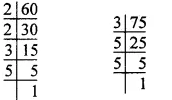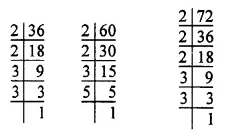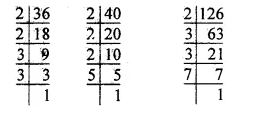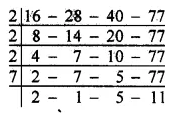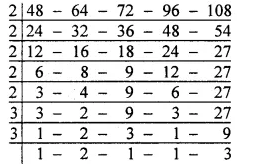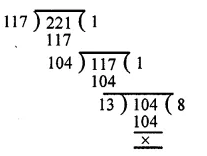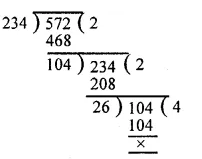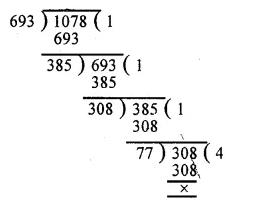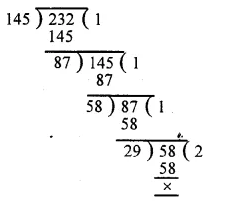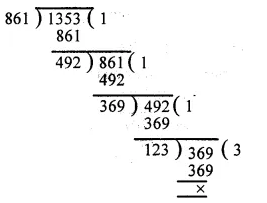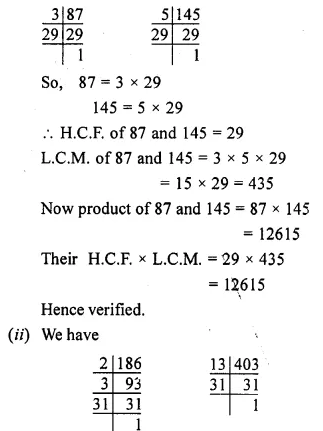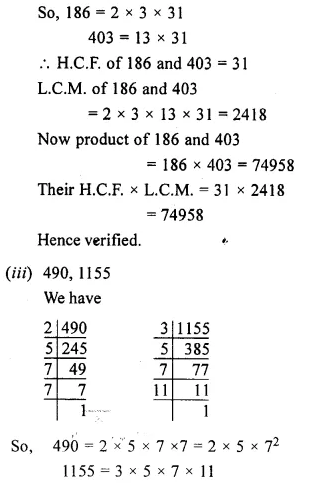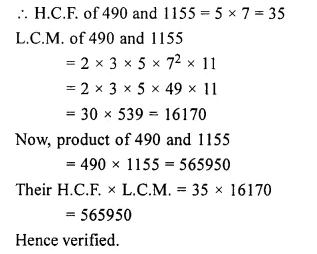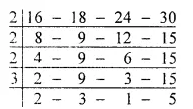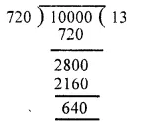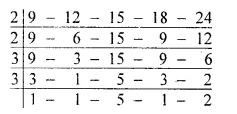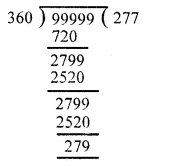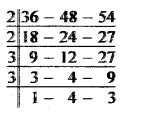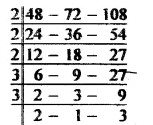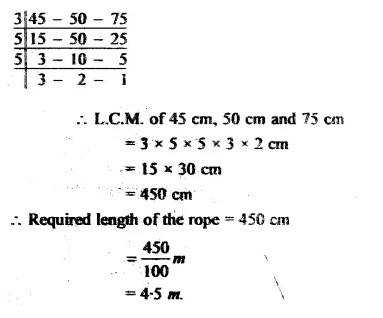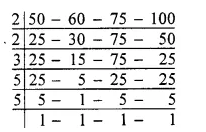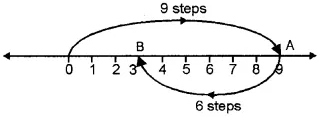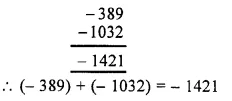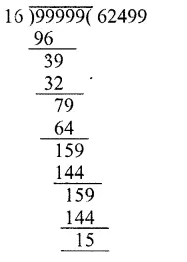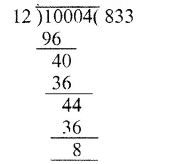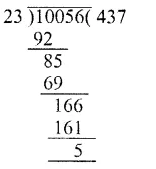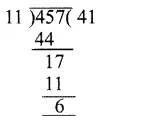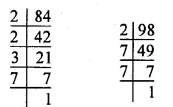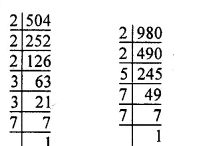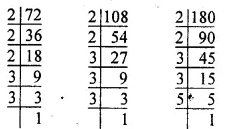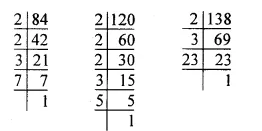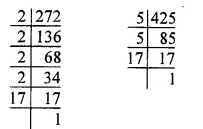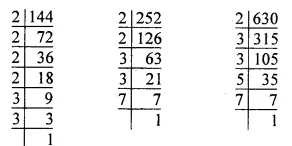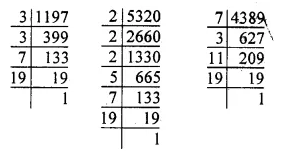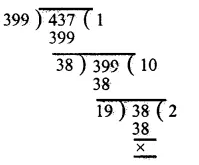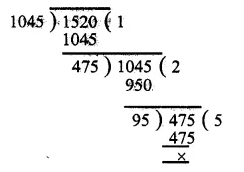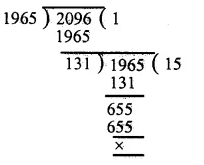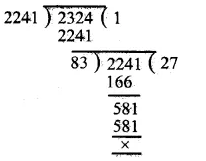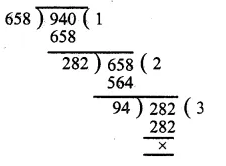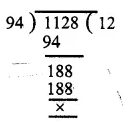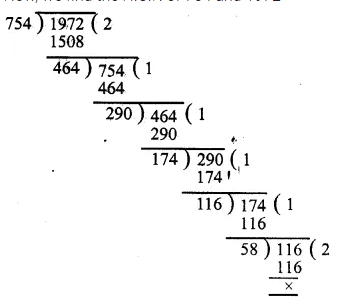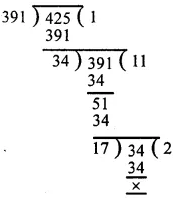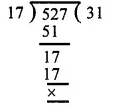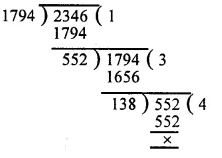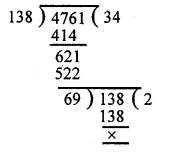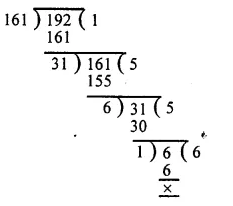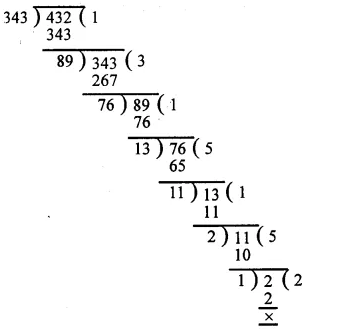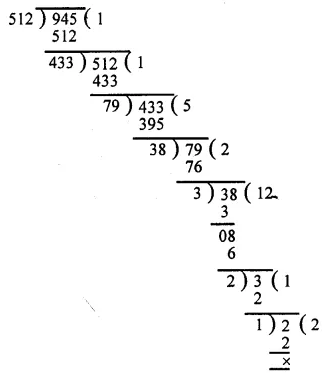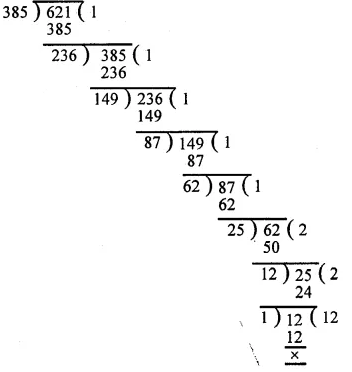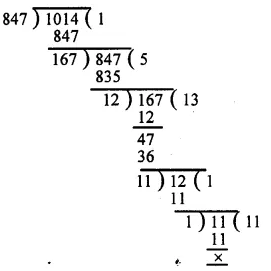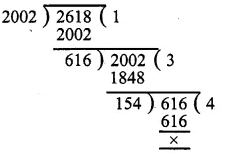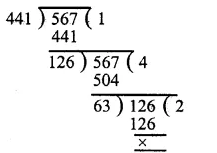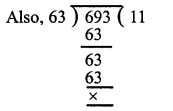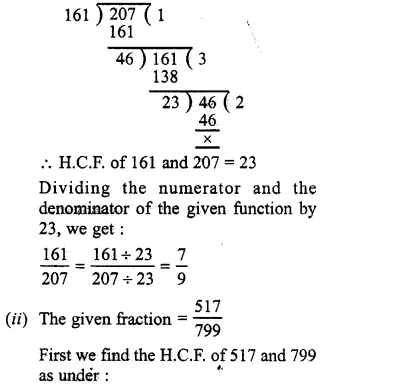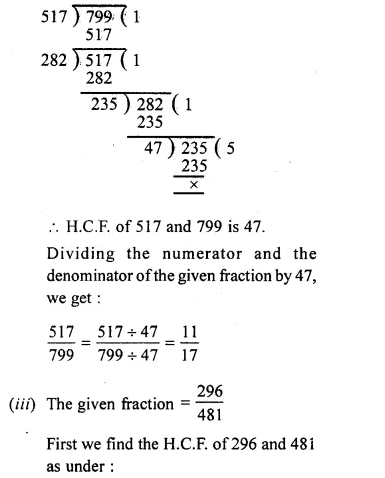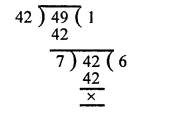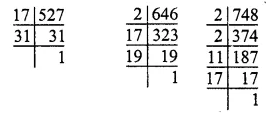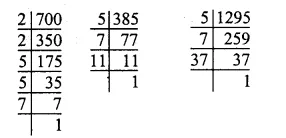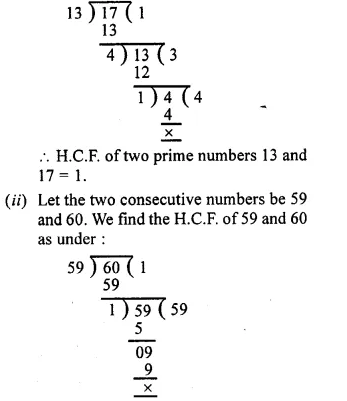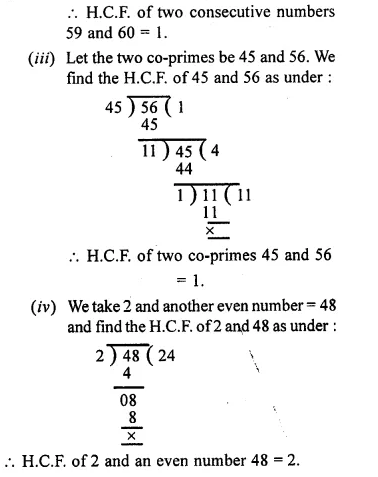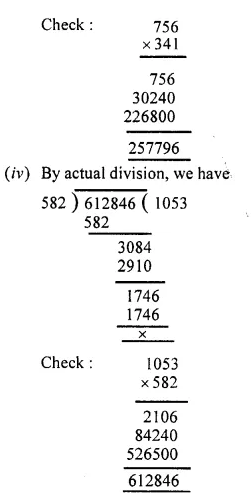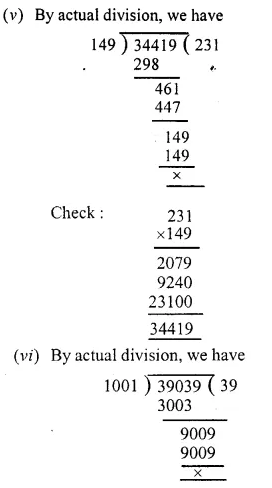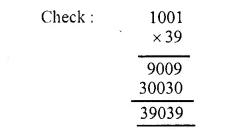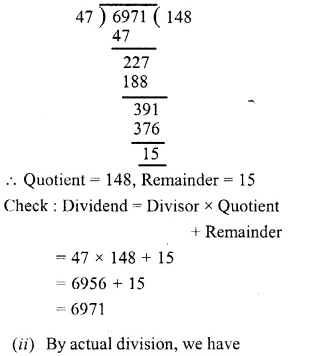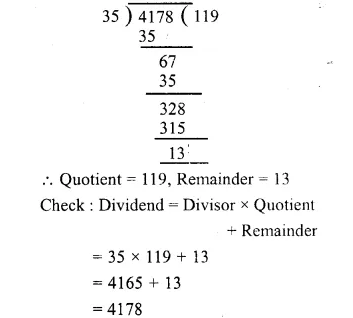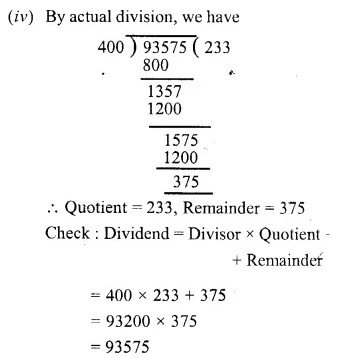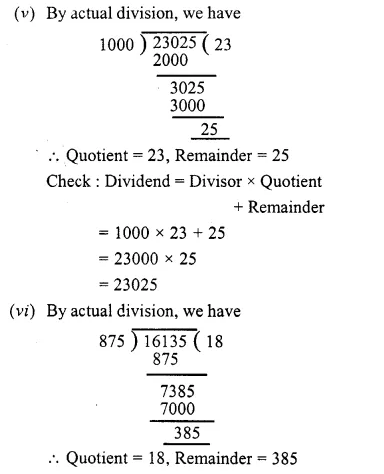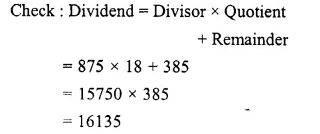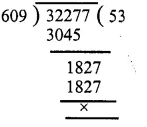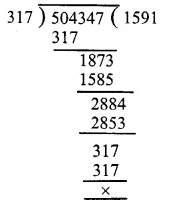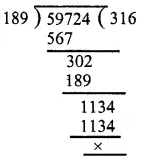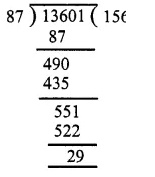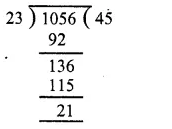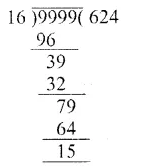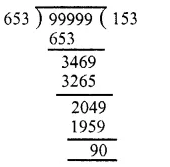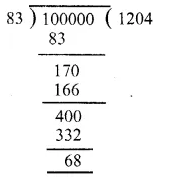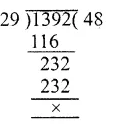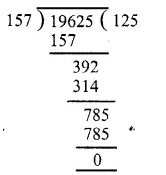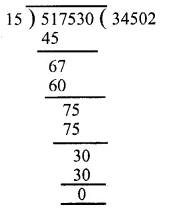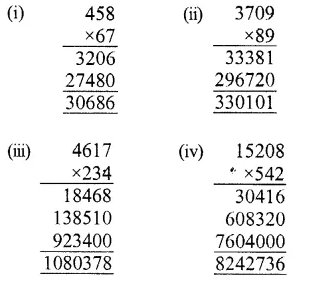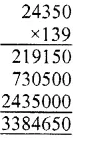RS Aggarwal Class 6 Solutions Chapter 4 Integers Ex 4C
These Solutions are part of RS Aggarwal Solutions Class 6. Here we have given RS Aggarwal Solutions Class 6 Chapter 4 Integers Ex 4C.
Other Exercises
- RS Aggarwal Solutions Class 6 Chapter 4 Integers Ex 4A
- RS Aggarwal Solutions Class 6 Chapter 4 Integers Ex 4B
- RS Aggarwal Solutions Class 6 Chapter 4 Integers Ex 4C
- RS Aggarwal Solutions Class 6 Chapter 4 Integers Ex 4D
- RS Aggarwal Solutions Class 6 Chapter 4 Integers Ex 4E
- RS Aggarwal Solutions Class 6 Chapter 4 Integers Ex 4F
Question 1.
Solution:
(i) We have : – 34 – 18 = – 52
(ii) We have : 25 – ( – 15) = 25 + 15 = 40
(iii) We have : – 43 – ( – 28) = – 43 + 28 = – 15
(iv) We have : ( – 37) – 68 = ( – 37) + ( – 68) = – 105
(v) We have : 0 – 219 = 0 + ( – 219) = – 219
(vi) We have : 0 – ( – 92) = 0 + 92 = 92
(vii) We have : – 250 – ( – 135) = ( – 250) + 135 = – 115
(viii) We have : – 287 – ( – 2768) = ( – 287) + 2768 = 2481
(ix) We have: – 271 – 6240 = ( – 271) + ( – 6240) = – 6511
(x) We have : 6250 – ( – 3012) = 6250 + 3012 = 9262
Question 2.
Solution:
The sum of – 1050 and 813.
= ( – 1050) + 813 = – 237
Required number = – 23 – ( – 237)
= ( – 23) + 237 = 214
Question 3.
Solution:
The sum of – 250 and 138
= ( – 250) + 138 = – 112
The sum of 136 and – 272
= 136 + ( – 272) = – 136
Required number = – 136 – ( – 112)
= ( – 136) + 112 = – 24
Question 4.
Solution:
The sum of 33 and – 47
= 33 + ( – 47)
= – 14
Required number = – 14 – ( – 84)
= ( – 14) + 84
= 70
Question 5.
Solution:
The difference of – 8 and – 68
= – 8 – ( – 68)
= ( – 8) + 68 = 60
Required sum = 60 + ( – 36)
= 24
Question 6.
Solution:
(i) We have :
[37 – ( – 8)] + [11 – ( – 30)]
= (37 + 8) + (11 + 30)
= 45 + 41
= 86
(ii) [ – 13 – ( – 17)] + [ – 22 – ( – 40)]
= ( – 13 + 17)+ ( – 22 + 40)
= 4 + 18
= 22
Question 7.
Solution:
We have :
34 – ( – 72) = 34 + 72 = 106 and ( – 72) – 34 = ( – 72) + ( – 34)
= – 106
Clearly, 34 – ( – 72) and ( – 72) – 34 are not equal.
Question 8.
Solution:
The sum of two integers = – 13
One number =170
The other number = – 13 – 170
= ( – 13) + ( – 170)
= – 183
Question 9.
Solution:
The sum of two integers = 65
One number = – 47
The other number = 65 – ( – 47)
= 65 + 47
= 112
Question 10.
Solution:
(i) True
(ii) True
(iii) The given statement is
– 14 > – 8 – ( – 7)
– 14 > – 8 + 7 .
– 14 > – 1 which is not true.
(iv) The given statement is – 5 – 2 > – 8
( – 5) + ( – 2) > – 8
– 7 > – 8 which is true
The given statement is true.
(v) The given statement is ( – 7) – 3 = ( – 3) – ( – 7)
( – 7) + ( – 3) = ( – 3) + 7
– 10 = 4
which is not true.
The given statement is false.
Question 11.
Solution:
The vertical distance between A and B = Distance of point A above sea level + distance of point B below sea level.
= 5700 m + 39600 m
= 45300 m.
The required distance between A and B
= 45300 metres.
Question 12.
Solution:
Temperature at 6 p.m. = 1°C
Temperature at mid-night = – 4°C
Required temperature fall = 1°C – ( – 4° C)
= 1°C + 4°C
= 5°C.
Hope given RS Aggarwal Solutions Class 6 Chapter 4 Integers Ex 4C are helpful to complete your math homework.
If you have any doubts, please comment below. Learn Insta try to provide online math tutoring for you.

